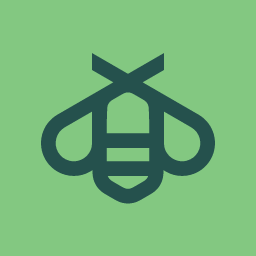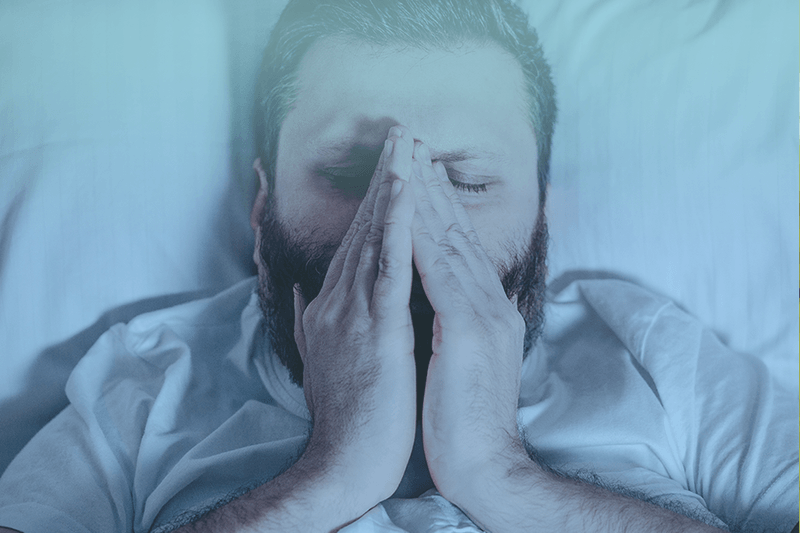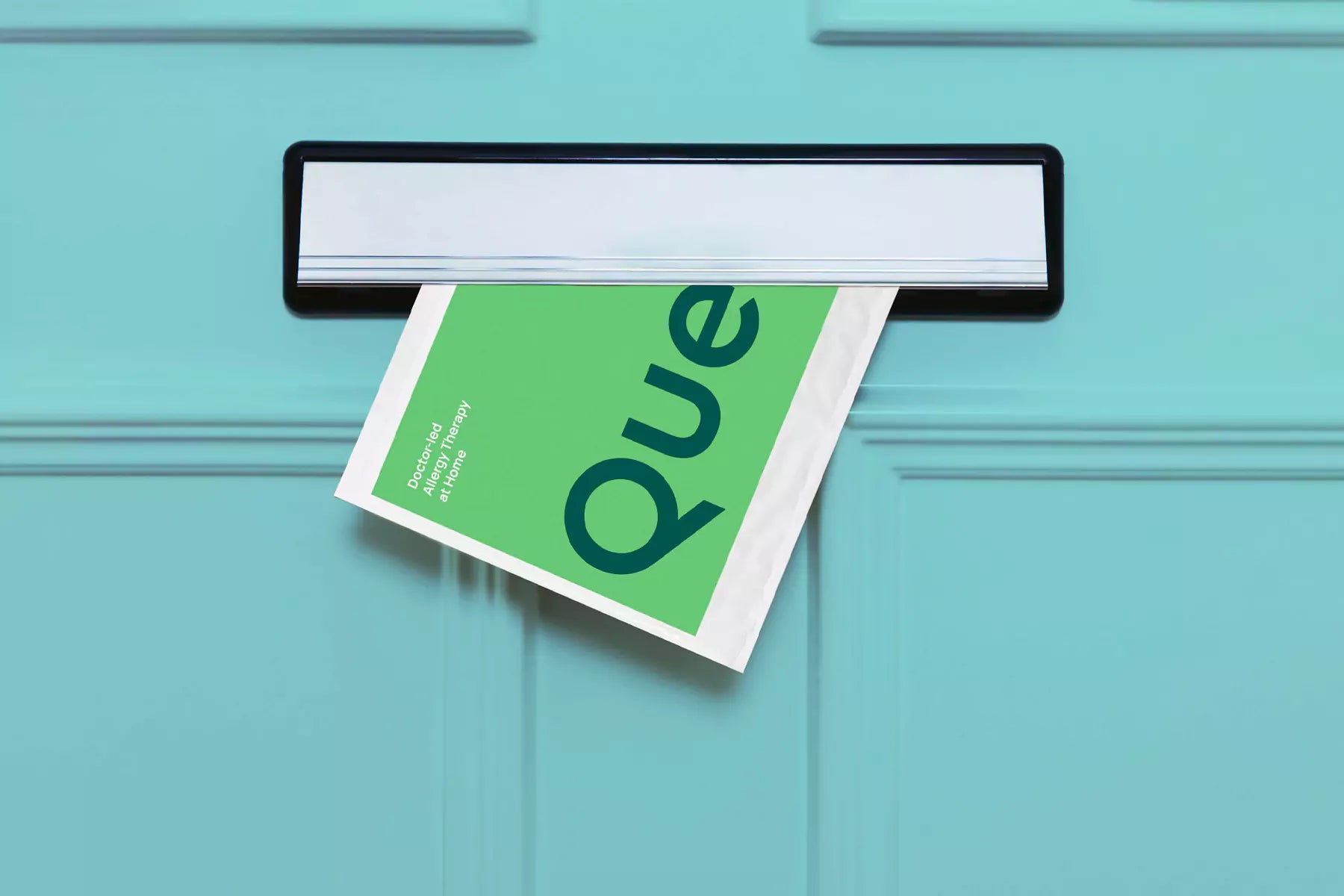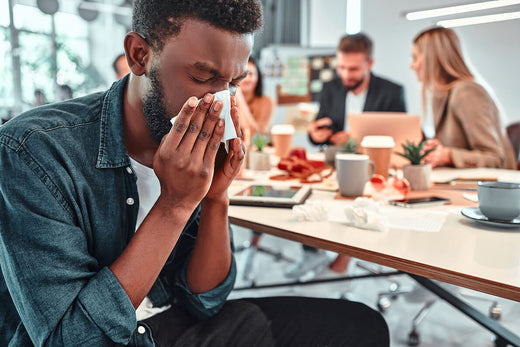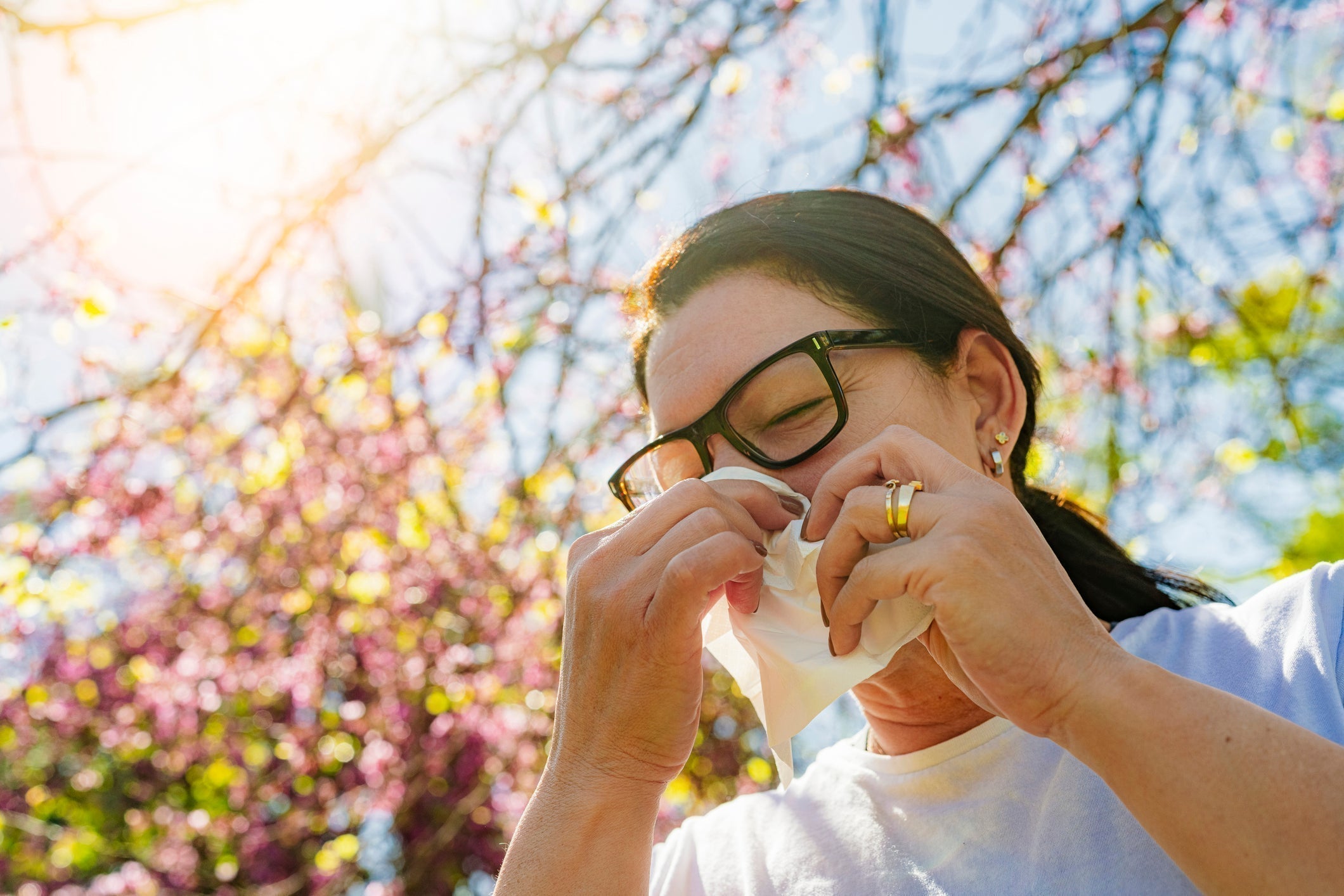
Pollen Season Guide: Everything You Need to Know to Survive Pollen Season
Pollen seasons can be frustrating, but you can take control by identifying the pollens you’re allergic to, knowing the seasons your allergies are worst, and following a tailored treatment plan to stay symptom-free.
Pollen is a tiny particle or seed released by trees, grasses, and weeds at certain times of the year. These particles are carried on the wind and may end up in our noses, eyes, ears, or mouths, causing allergy symptoms.
Pollen seasons can be very frustrating, as inhaling pollen can cause symptoms that affect sleep, productivity, and daily activities. In addition, if you have asthma, exposure to pollen can trigger asthma flare-ups. (1)
Some common symptoms of pollen allergy include:
-
Sneezing
-
Runny nose
-
Red eyes
-
Itchy eyes
-
Sore throat
-
Nasal congestion
-
Fatigue
-
General irritability
-
Poor sleep
Your exact symptoms may depend on the type of pollen to which you are allergic and the season. However, the only way to know for sure what pollen you are allergic to is to get tested by a licensed allergist.
This article explains what to expect with pollen allergy in each season, including common triggers, treatment options, and tips to prepare for allergy season.
Pollen Allergy by Seasons
Plants release pollen at different times in the year, so the type of pollen you may be allergic to depends on the pollen particles in the air that season.
Spring pollen allergy season
The spring pollen season (typically February to May) is also referred to as the “tree pollen season”. This is because in late winter and early spring, trees begin to release their pollen, which is how they reproduce.
During the spring, especially from early February to mid-June, most allergies caused by pollen are primarily due to trees. (2)
Common trees that may be responsible for your spring allergies include oak, maple, cedar, Ashe juniper, mountain cedar, birch, and eucalyptus. In late spring, grass pollen begins to spread in the air, triggering allergies. (3)
Depending on where you live in the U.S., the timing or type of pollen released might be slightly different. (2) For example, if you live in central California, olive trees are a huge culprit between late March and early April, whereas ‘cedar fever,’ caused by mountain cedar, dominates central Texas between December and January. However, it may occasionally extend into March.
The pollen concentration in the air during spring is highest in the late afternoon and evening. (4) Therefore, limiting exposure during this period may help. Unfortunately, the United States Department of Health and Human Services has noted that the spring pollen season is becoming longer and more intense due to warmer weather caused by climate change, making it harder for people to limit their exposure to high pollen seasons. (5)

Summer pollen allergy season
The summer pollen season (typically May to early July) is a time of grass pollen, as many grasses and hay tend to release their pollen at this time. As a result, hay fever (allergic rhinitis), which may include symptoms such as sneezing, runny nose, congestion, or itchy nose and eyes, is common during the summer.
In most regions of the United States, grass pollen season typically peaks from May to early July. However, in warmer parts of the country, such as the Southeast, South Texas, and Southern California, grass pollen season can be year-round. (6)
Common grasses that may be triggering your summer pollen allergies include Bermuda, Bahia, Rye, Fescue, Johnson, and Kentucky Blue.
In mid-summer to late summer, weeds, particularly ragweeds, begin to generate pollen. As a result, this season is commonly referred to as the ragweed pollen season. The ragweed pollen season usually peaks in late summer and early fall, but in some regions, it may continue into early winter. (7)
In general, during the grass pollen season, pollen levels are highest in the evening; however, during the ragweed pollen season, they are highest in the morning. (4) To minimize pollen exposure, it may be helpful to identify the pollen to which you are sensitive and to check the pollen count using your local news or trackers, such as those provided by the American Academy of Allergy, Asthma & Immunology.
Fall pollen allergy season
Fall pollen season (typically August to November) is referred to as the weed pollen season. Ragweed is also a major contributor to fall allergies, making up to 75% of the weed burden. This weed pollen is especially common for people living on the East Coast and the Midwest. (2,4)
Other weeds that may trigger fall allergies include:
- Pigweed
- Russian thistle
- Burning bush
- Cocklebur
- Mugwort
- Lamb’s-quarter
- Tumbleweed
- Sagebrush
In early fall, pollen levels are usually highest in the morning. (4)
Winter Pollen allergy season
In many states across the country, pollen is normally dormant in winter. Indoor allergens, such as pet dander, mold, dust mites, and cockroaches, are more likely to trigger allergies during the winter months.
However, there are exceptions in warmer climates, where some plants do not go dormant at this time. For example, mountain cedar, also known as Ashe juniper, often triggers allergies between December and mid-February in states such as Texas, Oklahoma, Arizona, and New Mexico. In areas like Texas, winter is often referred to as the Texas cedar fever season.
While a winter cold may sometimes present similar symptoms to those of winter pollen allergies, the key difference lies in the duration and timing of the symptoms. Colds usually last for a few days or a week. If it lasts longer than 10 days and is recurrent, it is most likely an allergy.
Consult an allergist to determine if your symptoms are caused by indoor or outdoor allergens, allowing you to treat them more effectively.

Factors Affecting Pollen Allergy
People react differently to pollen, even when exposed to the same type and amount. Two major factors that may affect what pollens you respond to or the severity of your symptoms include:
1. Genetics and family history
Some people inherit genes that increase their likelihood of developing an allergy. (8)
2. Environmental factors
Certain factors in the environment can raise your risk of developing pollen allergies or make your symptoms worse. Some of these include: (7,8)
-
Increased temperature and humidity
-
Extreme weather events like floods and drought
-
Air pollution
-
Urban living
-
Weather patterns
-
Exposure to green spaces with high pollen plants
Treatment of Seasonal Pollen Allergy
Regardless of the season, if you experience pollen allergy, there are three main ways to manage your symptoms, some of which include:
1. Reduce/Limit exposure to allergens
Knowing which plants, grasses, or weeds you are allergic to and minimizing your exposure to these allergens can reduce your triggers.
Some practical ways to reduce your exposure include:
- Take an allergy test to find out which specific weeds, trees, or grasses you are allergic to.
- Track pollen levels in your area, and minimize time spent outside when the pollen count is high.
- If you are outside, consider wearing a mask during peak pollen seasons or at certain times of the day.
- Shower after being outside to remove any pollen that may be clinging to your skin and hair.
- If the weather conditions are right, consider keeping your windows closed during pollen season.
- Invest in high-efficiency air filters to remove allergens, such as pollen or mold, from your home.
- Clean surfaces and floors in your home regularly to remove dust and prevent mold growth.
2. Use an Over-the-Counter medication
Over-the-counter (OTC) medications can also help reduce the severity of your allergy symptoms. However, they do not prevent them or stop them from happening again. Some OTCs that can help manage pollen allergen symptoms include:
-
Antihistamines such as loratadine (Claritin), cetirizine (Zyrtec), fexofenadine (Allegra), and levocetirizine (Xyzal).
-
Oral decongestants such as pseudoephedrine (Sudafed)
-
Nasal steroid sprays such as fluticasone propionate (Flonase Allergy Relief) and budesonide (Rhinocort Allergy).
-
Cromolyn sodium nasal spray
3. Immunotherapy
Immunotherapy is one of the most effective ways to treat pollen allergies, and it is currently the closest treatment to a cure for allergies. (4)
There are two major types of immunotherapy used in treating pollen allergies: allergen shots (also known as subcutaneous immunotherapy) and allergy drops (also referred to as sublingual immunotherapy).
Allergy shots involve injecting a diluted amount of allergen concentrate into the body to retrain the immune system to become less reactive over time. These shots can provide long-lasting relief for pollen allergy and may even reduce symptoms of allergic reactions. Although it is small, allergy shots carry a risk of severe allergic shock (anaphylaxis) that can be life-threatening.
If you cannot tolerate injections or need something that does not require frequent visits to a healthcare provider, then allergy drops might be a better option for you.
Allergy drops involve placing even smaller doses of allergen concentrate under the tongue. Because allergy drops are taken daily, the dosage is much smaller than shots and is an overall safer and more convenient treatment for most patients. Studies show that allergy drops are a safe and effective alternative to allergy shots. (10)
To use allergy drops to prevent pollen allergies, you may need to take them a few weeks to a few months before your peak allergy season, as these treatments are not intended for immediate relief.

Quello allergy drops can help you overcome allergy season.
At Quello, we understand how frustrating pollen seasons can be, so we have created a convenient way to make allergies more manageable.
The approach is quite simple. First, consult with our team of allergists to receive free consultations and determine which pollen you are most allergic to, thereby removing the guesswork. We then create a personalized allergy drop tailored to your unique allergies and deliver it to you.
Ready to take control of the next pollen season? Register for a free consultation, and we will guide you from there.
FAQs
Can I build immunity to pollen?
You do not develop immunity to pollens the same way you would to a virus. However, allergy shots or drops can create a similar experience. Repeated exposure to an allergen can help your body become more tolerant to it. (10) For some people, this may mean reduced symptoms and longer-lasting relief.
Is pollen allergy worse in spring or fall?
Spring allergies are different from fall allergies, so the season that feels ‘worse’ may depend on the specific pollen you are allergic to and your individual sensitivity. Where you live may also make the pollen season significantly worse. For example, spring pollen allergies tend to be worse in the southeastern United States.
Does pollen go away in winter?
No, pollen season does not completely disappear in the winter. However, pollen levels are generally lower during these times, as many plants are dormant. An exception is people living in warmer climates, such as those in the Southwestern United States, where exposure to Ashe Juniper tree pollen during winter can lead to cedar fever.
Overcome your allergies at home with our doctor-led therapy.
Get started with our free allergy test kitGet Started with no test needed.
Overcome your allergies at home with our doctor-led therapy.
Get started with our free allergy test kitGet Started with no test needed.
